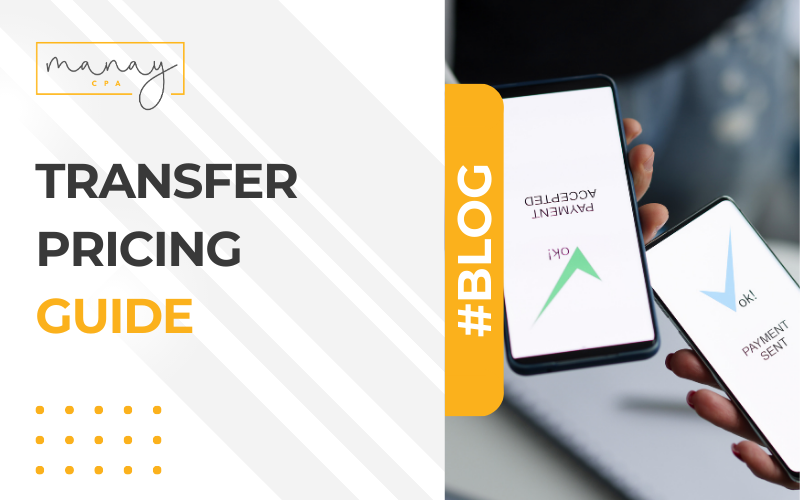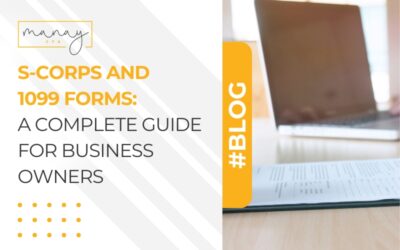Transfer Pricing Guide: Learn How to Use Transfer Pricing

Transfer pricing can be a complex and challenging area for businesses to navigate. It sets the price for goods and services between related companies within a multinational corporation. Transfer pricing helps to ensure that these transactions are conducted fairly and that taxes are paid appropriately. But how do you master transfer pricing? This guide will take you through the key concepts, methods, and best transfer pricing practices.
Table of Contents
ToggleIntroduction to Transfer Pricing: What It Is and Why It Matters
Transfer pricing is a crucial aspect of international business operations. It determines the price of goods and services transferred between related companies within a multinational corporation, and it affects the tax liabilities of these companies. Transfer pricing is used by companies to allocate profits between different subsidiaries and to minimize their global tax payments.
One of the main reasons why transfer pricing matters is because it can significantly impact a company’s financial statements. Transfer pricing can affect the profitability of individual subsidiaries, the corporation’s overall financial performance, and the company’s tax liabilities. Therefore, mastering transfer pricing is essential for any multinational corporation.
In addition, transfer pricing is a highly regulated area of tax law, and compliance is critical to avoid penalties and disputes with tax authorities. Transfer pricing regulations constantly evolve, and keeping up-to-date with the latest developments is essential.
Types of Transfer Pricing: Methods and Approaches
There are several methods and approaches to transfer pricing. The most common methods are the comparable uncontrolled price method, the resale price method, the cost-plus method, and the transactional net margin method. Each method has its advantages and disadvantages, and the choice of method depends on the specific circumstances of the transaction.
The comparable uncontrolled price (CUP) method involves comparing the price of a controlled transaction with the cost of an unchecked transaction between unrelated parties. The resale price method (RPM) sets a product’s worth based on the buyer’s resale price to an unrelated third party. The cost-plus method involves adding a markup to the cost of production to determine the price of a product. The transactional net margin method (TNMM) compares the net profit margin of a controlled transaction with that of an uncontrolled transaction.
Arm’s Length Principle: Understanding the Key Concept
The arm’s length principle is the cornerstone of transfer pricing. The principle requires that the price of a controlled transaction should be the same as the price that would be charged between unrelated parties in a similar transaction. In other words, the price should be determined based on market conditions and not influenced by the relationship between the related parties.
The arm’s length principle is essential for ensuring that transfer pricing reflects the economic reality of the transaction. Tax authorities use the principle to assess the fairness of the transfer pricing arrangements and avoid tax avoidance and base erosion.
Transfer Pricing Documentation: Compliance and Best Practices
Transfer pricing documentation is critical for compliance with transfer pricing regulations. Documentation should include a description of the controlled transactions, the transfer pricing methods used, and the analysis supporting the transfer pricing. The documentation should be prepared contemporaneously and should be updated annually.
In addition to complying with regulations, there are several best practices for transfer pricing documentation. These include documenting the business reasons for the transfer pricing arrangements, using multiple methods to determine the arm’s length price, and documenting the factors that affect the selection of the transfer pricing method.
Transfer Pricing Risk Assessment: Common Pitfalls and How to Avoid Them
Transfer pricing can be risky if not managed properly. Common pitfalls include failing to comply with regulations, using inappropriate transfer pricing methods, and needing to document the transfer pricing arrangements. These pitfalls can lead to penalties, disputes with tax authorities, and reputational damage.
It is essential to conduct a transfer pricing risk assessment. The risk assessment should identify the potential risks and the likelihood of these risks occurring. The evaluation should also include a plan to mitigate the risks and ensure compliance with transfer pricing regulations.

Advanced Transfer Pricing Issues: Intangibles, Services, and Cost-Sharing
Advanced transfer pricing issues include the transfer pricing of intangibles, services, and cost-sharing arrangements. Intangibles retain patents, trademarks, and copyrights, and their transfer pricing can be complex. Services include management, marketing, and technical assistance and require careful consideration of the value added by the service provider. Cost-sharing arrangements involve sharing costs and risks associated with the development of intangibles.
It is paramount to have a thorough understanding of the specific issues and the transfer pricing methods that are appropriate for each situation. It is also necessary to document the transfer pricing arrangements and to ensure compliance with transfer pricing regulations.
Transfer Pricing Disputes: Resolving Conflicts with Tax Authorities
Transfer pricing disputes can arise between multinational corporations and tax authorities. These disputes can be costly and time-consuming and damage the company’s reputation. Understanding the facts clearly and providing a solid defense of the transfer pricing arrangements is vital to resolve transfer pricing disputes.
In addition, it is crucial to engage with the tax authorities early in the process and to seek professional advice from transfer pricing experts. It is also essential to document the transfer pricing arrangements and to ensure compliance with transfer pricing regulations.
Transfer Pricing and BEPS: Implications for Multinational Enterprises
The Base Erosion and Profit Shifting (BEPS) project is a global initiative to address tax avoidance and base erosion by multinational enterprises. The BEPS project has significant implications for transfer pricing, and multinational enterprises need to be aware of the changes and adapt their transfer pricing policies accordingly.
The BEPS project includes several actions related to transfer pricing, including introducing country-by-country reporting, revising the transfer pricing guidelines, and introducing new transfer pricing documentation requirements. Understanding the changes and ensuring compliance with the new regulations is fundamental.
Transfer Pricing in Practice: Case Studies and Examples
Looking at some case studies and examples to illustrate transfer pricing is helpful. For example, a multinational corporation may have a subsidiary in a low-tax jurisdiction that provides management services to other subsidiaries. The transfer pricing of these services must be set at an arm’s length price, considering the value added by the service provider.
Another example is the transfer pricing of intangibles. A pharmaceutical company may have a patent for a new drug developed in one country and sold in other countries. The transfer pricing of the patent must be set at an arm’s length price, taking into account the value of the patent to the company.
Conclusion: Key Takeaways and Next Steps for Transfer Pricing Mastery
In summary, transfer pricing is a critical aspect of international business operations. Understanding the fundamental concepts, methods, and best practices is essential. It is also crucial to document the transfer pricing arrangements, conduct a risk assessment, and ensure compliance with transfer pricing regulations.
The steps for transfer pricing mastery include engaging with experts, staying up-to-date with the latest developments in transfer pricing regulations, and conducting regular reviews of transfer pricing policies and procedures. By mastering transfer pricing, multinational enterprises can ensure compliance with laws, mitigate risks, and optimize their global tax payments.
Let’s Navigate Transfer Pricing Together
Transfer pricing is a complex and often confusing area of taxation that can leave many business owners scratching their heads. However, it’s an area that must be addressed, as non-compliance can lead to hefty fines and legal issues. That’s why having a team of experts on hand is essential to help you navigate the murky waters of transfer pricing.
Don’t worry, though. Our team is here to help you quickly navigate this complex maze of transfer pricing. We understand that every business is unique, so we take a tailored approach to each client, working closely with you to identify your specific needs and goals. So, whether you’re just starting or a seasoned veteran looking for a fresh perspective, we’re here to help. Get in touch with our team today, and let us help you navigate transfer pricing with confidence.

Published on: 17 May 2023
Last updated on: 24 July 2023
Manay CPA is a reputable, full-service CPA firm based in Atlanta, Georgia. Founded in 2001, we provide comprehensive accounting and tax solutions to individuals and businesses across all 50 states.





